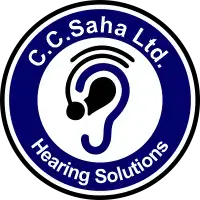FAQs
Frequently Asked Questions
Ear, Nose and Throat (ENT) doctors, who can initially determine if there’s any medical reason causing the hearing loss Audiologists, who are qualified professionals in audiology (the study of hearing) and specialize in testing and evaluating hearing loss, and help in building up the treatment plan, sometimes even taking part in treating some hearing disorders Qualified dispensers, who not only recommend the best hearing aids suited for you but are also trained in the trial and fitting of these instruments
Only a miniscule fraction of hearing loss cases can be treated medically or surgically. The vast majority of patients with hearing loss are treated with hearing aids.
As soon as you feel you have a hearing problem, do not waste any time. You must immediately seek an appointment with an ENT doctor who will determine whether it can be treated medically. In case it cannot, he is likely to recommend you for an audiology test so that you can have a thorough check-up of your ears by a qualified audiologist. Based on the audiogram report, the ENT doctor will be in a better position to determine the extent of damage to the inner ears, the degree of hearing loss and finally whether hearing aids can help you deal with it.
A hearing aid is an electronic hearing device that receives, amplifies and then sends sound to the ear so that the person is able to hear better. This device is powered by battery and consists of three major components that make it effective: Microphone, Amplifier and Speaker. These three parts translate sound into a volume and frequency that is easier for people to hear when they have hearing problems.
Digital hearing aids are the most advanced solutions in the market today. These hearing instruments contain a tiny computer chip that translates sound to digital code, changes it and re-transmits it back by using mathematical calculations for increased accuracy of sound processing. Digital hearing aids provide the greatest flexibility for matching individual hearing requirements and filtering out unwanted sounds. They analyze surrounding sounds to maximize soft speech-like sounds while minimizing louder background noises like traffic or wind.
A hearing aid takes in sound through the microphone, sends it through filters to the amplifier, which send it to a receiver. The clean and amplified sound is then transmitted into the ear canal. The sound must travel through the ear canal, make the eardrum vibrate, sending the sound through the bones of the middle ear to the inner ear (cochlea). The inner ear has hair cells that help to transmit the sound to the nerve.
Hearing aids can help but they cannot restore hearing to normal the way eyeglasses correct vision. They let you hear soft sounds that you could not hear before and prevent loud sounds from becoming uncomfortably loud for you. Hearing aids are also designed to improve your ability to understand speech, even in noisy surroundings.
There are several factors that will determine which hearing aid will be the right one for you. They include the nature and extent of your hearing loss, your lifestyle preferences, activities that you regularly enjoy doing and the size and shape of your outer and inner ear canal. Based on these requirements, your hearing dispenser will help you choose the hearing aid best suited for you.
Today, hearing aids are no longer considered a social stigma. They do not make you look unattractive, handicapped or old. In fact, today’s hearing aids are not just state-of-the-art but are discreet, trendy, stylish, colorful and suited for all age groups. Besides, once you have a hearing aid, your quality of life will improve significantly, so cosmetics will not be much of an issue for you.
Listening with two ears (“binaural hearing”) has significant advantages over listening with one unless you have a hearing loss in only one ear. Age and noise-related hearing loss often tend to affect both ears. If there is a loss in both ears, you will probably benefit more with a binaural solution. For instance, it will help you locate where sounds are coming from and tell you approximately how far they are. You will also be able to distinguish speech from noise more easily and focus on the speech. The same volume sounds louder when listening with two ears. Wearing two instruments can eventually help improve and preserve your hearing ability.
Getting used to wearing hearing instruments does take time especially for those who have had a hearing loss for a very long time. It can take several visits to achieve a comfortable fit and sound quality. Once you start to wear your hearing instruments, you will find making conversation less tiring, using the phone more convenient and watching TV enjoyable. Of course, you need to get accustomed to the physical sensation of wearing hearing instruments but fortunately, this adjustment should not take too long.
During the first couple of weeks, it is best to wear your new hearing instruments at home. Wear them for a few hours every day while watching TV or having a conversation. Once you are accustomed to your hearing instruments’ sound, you can gradually increase the usage and wear them for longer periods of time and in noisier surroundings. Over time, you will get very comfortable with hearing aids as they will soon become a part and parcel of your day-to-day activities.
You can follow the simple week-wise schedule given below:
Week 1
Start wearing the hearing aid(s) first at home in quieter surroundings. Start with 5 hours a day and gradually increase the time by 1 hour every day. By the end of week 1, you should be wearing the hearing aid(s) all day at home.
Week 2
Start wearing the hearing aid(s) when you are out, in noisier surroundings. Start with 2 hours per outing and gradually increase the time by 1 hour per outing. By the end of week 2, you should be wearing the hearing aid(s) all day long.
Week 3
Start wearing the hearing aid(s) when you are commuting or in public transport e.g. car, bus, etc.
These are recommendations for the minimum length of daily use. Hearing aids can be worn for longer periods if you are comfortable doing so. Eventually, these instruments will need to be worn consistently if one has to get completely accustomed to them. When worn consistently, hearing aids can take upto 3 months for a person to get acclimatized to their sound.
Battery life depends on the length of time you wear your hearing aids, the size of your hearing aids, the type of circuit you have and the size of battery you use. Your hearing aid dispenser will be able to give an estimated life for your particular batteries.
Referred to as ‘feedback’, whistling can be a result of the hearing instruments being inserted incorrectly or the volume being too high. If adjustments to the fitting and volume do not correct the feedback, ask your hearing aid dispenser to check for wax, if your ear mold tubings or ear hooks require replacing, and the fit of your hearing instruments.
Proper care helps retain optimum hearing conditions and extends the life of your hearing aid. You can take care of your hearing aid by following these steps:
- Store your hearing aid in a cool and dry place
- Switch off your hearing aid when not using
- Change batteries often so that they do not suddenly run out of power
- Remove earwax from your hearing aid to prevent temporary malfunction or permanent damage
- Clean your hearing aid using the small brush or a soft cloth
- Never insert tools into the sound outlet as this could damage the receiver
- Change filters often so they do not collect wax or dirt
- Avoid wearing your hearing aid in the shower or swimming pool or when using a hairdryer or spray


